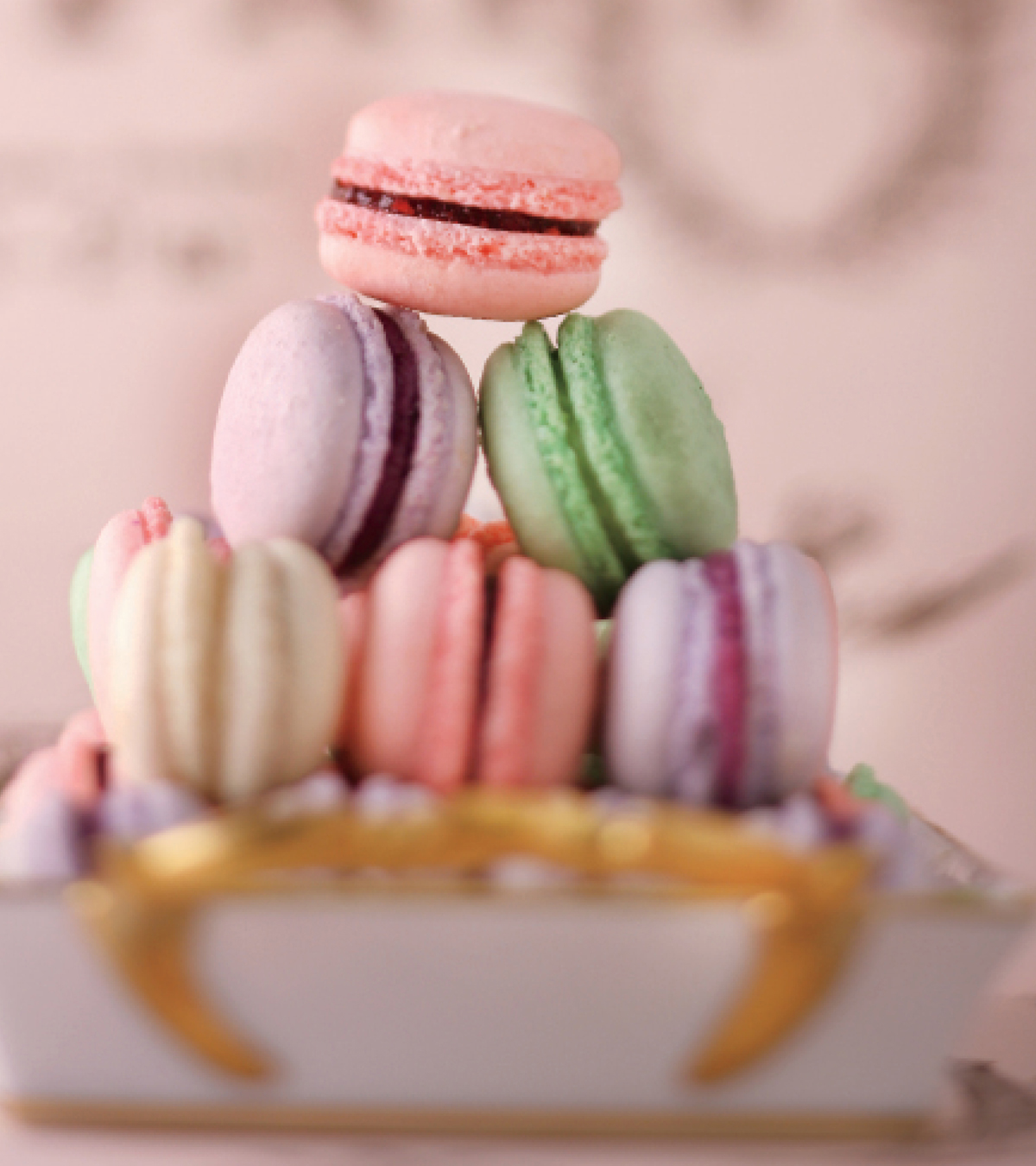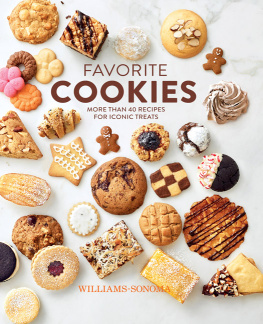Contents



Payard
Cookies
FRANOIS PAYARD with ANNE E. MCBRIDE
PHOTOGRAPHY BY ROGRIO VOLTAN
HOUGHTON MIFFLIN HARCOURT
BOSTON / NEW YORK / 2015
For my father, who gave me my love of cookies, and so much more
Copyright 2015 by Franois Payard
Photography 2015 by Rogrio Voltan
All rights reserved.
For information about permission to reproduce selections from this book, write to Permissions, Houghton Mifflin Harcourt Publishing Company, 215 Park Avenue South, New York, New York 10003.
www.hmhco.com
Library of Congress Cataloging-in-Publication Data
Payard, Franois.
Payard cookies / Franois Payard with Anne E. McBride ; photography by Rogrio Voltan.
pages cm
Includes index.
ISBN 978-0-544-51298-6 (hardcover); 978-0-544-51386-0 (ebook)
1. Cookies. 2. Cooking, French. I. McBride, Anne E. II. Title.
TX772.P339 2015
641.86'54dc23
2014044010
Jacket & book design by Rita Sowins / Sowins Design
v1.1115


Introduction
Cookies are what my family loves the most. Thats really saying something, considering that we are a multi-generational family of pastry chefs. I grew up in the south of France, where we eat a lot of ice cream rather than elaborate desserts, since its so hot. And what better to dip into your ice cream than a cookie? My dad, who was a pastry chef, always skipped dessert but would never skip eating a cookie. His favorite ones were sabls and similar dry cookies that can be used to scoop up ice cream and as a result soften ever so slightly. He rotated a selection of fifteen to twenty cookies in his pastry shop, making a huge batch of a different variety every day, since most cookies keep well for several days. This was a great way to increase sales since he also sold frozen cakes that were nicely complemented by the cookiessomething he always pointed out to his customers. What is available every day also becomes less tempting or even enjoyable, so the ever-rotating selection of cookies made for treats he enjoyed greatly, as did the regulars of his pastry shop, who never knew what might await them when they stepped inside.
The rich and buttery financiers my father made in a large barquette size were his best-sellers. After he retired, he still made them at home for my sister, since they were her favorite, and would often have some in the freezer, ready for one of us to visit. He passed away in spring 2014, and it was a bittersweet moment when my family was all together again a few months later and we ate the very last batch of financiers he ever made. Being able to share his recipe here means that others will make this their special cookiethe best possible way to honor my fathers memory.
I am proud and happy to share many of his recipes in this book, since I grew up with them and they have meant so much to me for so long, bringing back childhood memories with just one bite. Alongside these family favorites you will find dozens of cookie recipes that I developed over the years for my retail and wholesale businesses, and just for pleasure too. While mostly French and classic, they reflect my life in America and my deep appreciation of other European cookie traditions, like German and SwissI think that those, alongside the French, are the best cookies in the world. Ive also spent two decades in New York, so Italian-American cookies are part of my repertoire too now.
In France, we very often buy cookies at pastry shops, knowing exactly which one does financiers or petits fours best and who has great specialties. A platter of cookies adds a nice touch, a little something extra, at the end of the meal and invites lingering around the table with a cup of coffee or a glass of grappa. In the United States, most cookie baking or purchasing seems to take place around the holidays, as part of special occasion celebrations. What I want to do with this book is give you a reason and an opportunity to make every day just a little more special. You can serve cookies on tiered platters (look for beautiful vintage ones at flea markets and in vintage shops, for example), on ceramic plates that have a more rustic appearance, on long rectangular or oblong serving plates, or really on anything that youd like. One of the things I love most about cookies is that they allow a lot of self-expression, from flavor design to eating selection. So follow baking rules to ensure the recipes succeed, but other than that feel free to break any rules when it comes to serving.
The French way of making cookies consists of building layer after layer, starting by creaming butter and flour to create a sandier texture that is very enjoyable in the mouth. We typically break cookies into three categories in France: the soft, or moelleux, ones, like financiers; the dry, or sec ones, like sabls; and the fresh petits fours, which are akin to mini pastries. Here I focus on the first two kinds. When serving a cookie platter, you want to offer a range of textures, flavors, and shapes to keep it as interesting as possible. This book is organized in a way that lets you pick from the different categories easily.
We sell a lot of cookies at Payard, focusing mostly on classic varieties. We used to bake 500 pounds a day for our wholesale business, and also sold some in bulk in the stores so that customers could come in and, as they might have in my dads shop, pick from a rotating assortment. While we no longer sell cookies in bulk, we nonetheless always have available bags of certain types of cookies, not to mention a wide selection of macarons. Our best-sellers are always financiers (pistachio, apricot, chocolate, and vanilla), followed by sabls and other dry and nutty cookies. We also always carry special cookies for Passover, which have the advantage of being gluten-free and are great to eat year-round.
My own favorites are sabls and every sort of crumbly cookie, along with my own style of biscotti, which I slice very thinly. I like traditional and simple flavors for cookiesthe types you love and always go back to. Before bed you dont crave a curry-flavored chocolate, for example, but something simpler; its the same with cookies. A few recipes in this book depart from this perspective, but its generally my approach and preference when deciding what cookies to offer at the store or to bake for family and friends. Classic cookies also are not seasonaleven if some are more typically found around the holidays, and spiced cookies might be better matched to colder weather while light and jammy ones are perfect in summer breezeswhich works well with my philosophy of eating cookies year-round. Cookies are the perfect one- or two-bite treats; they dont require a huge gastronomic commitment the way a slice of cake or pie might. When hosting a dinner party, I like to present a variety of cookies on a platter for that reason. Even someone who is not hungry for a full dessert will be happy to be able to enjoy one small sweet taste.
Create your own family traditions around cookies, going beyond the holidays and inviting your kids, partners, or friends to join you in the kitchen to bake together, or simply by sharing with them what youve baked. Bring cookie platters to work or give a friend an elegant bag or box filled with cookies. Learn to decorate beautiful cookies. Find your own specialty that will always be in your freezer. And join me in making every day just a little sweeter by baking more cookies.
















